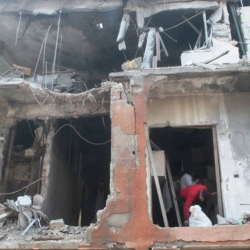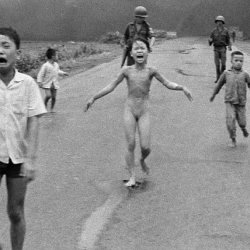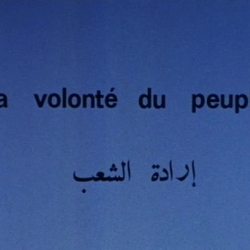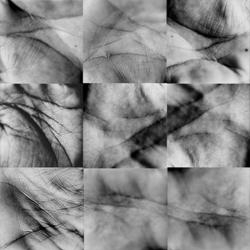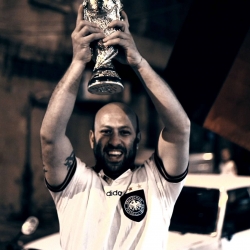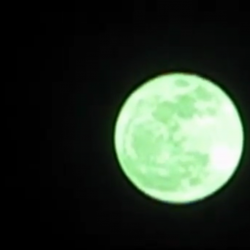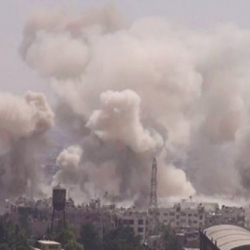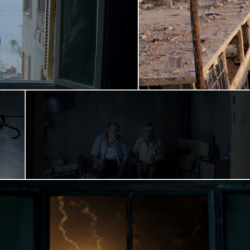The A.G. Affair; or, did he, or didn’t he?
12/03/2020
Author: Samer Frangieh
The case began with a piece of gossip or info that spread by whispers, mixed here with sarcasm and there with a sort of ‘moralizing’ surprise… “Did Ahmad really go to Syria to film?” …The question spread and the circle in-the-know widened, as did those who were expected to take a stance from a friend who went to Syria to capture a few scenes of destruction. Bit by bit, gossip turned into controversy, growing in the shadows and with every private conversation on the sidelines. And with every repetition of this question the number of victims increased…everyone was still asking “Who’s in-the-know?”, a question to reassure whoever might be exposed as having known all along and not said anything…“Are you going to say something?”…“I’m not sure…”
The affair starts with a Facebook debate on Ahmad Ghossein’s recent film, All this Victory (Ar. Jidār al-Ṣawt, trans. The Sound Barrier). The events of the movie take place during the July 2006 war, in an isolated house in South Lebanon. On two separate floors, Lebanese civilians cohabit with Israeli soldiers. After a decade of reconstruction, however, there are no longer any traces of the Israeli destruction in South Lebanon that might be suitable for making a film about the war. So, the production apparatus decided to go to Syria, to destroyed areas on the border with Lebanon, so as to borrow some scenes of destruction from over there and insert them into a narrative about another war over here.
It’s hard to ignore the ‘political baggage’ weighing down this kind of metaphor or technical decision, which turns Syrian devastation into décor for the July 2006 war. With Hezbollah’s decision to intervene in Syria on the side of the Baathist regime, the narrative of the “Divine Victory” was conscripted to confront the ‘Syrian revolution’, as ideological artillery to justify the regime’s repression. And with Hezbollah’s victory in its project to turn Syria into rubble, All this Victory came along to confirm with its metaphor, or perhaps despite it, the victory of Hezbollah’s narrative. The decision to turn Syrian destruction into a backdrop for the myth of the July 2006 War seems like the aesthetic translation of a military victory. It’s the final victory over the Syrian revolution, or to be more precise, its memory.
Wait and see the film
The filmmaker may not have wanted to say that. The weight of the ‘political baggage’ might not have expressed his intentions or the content of his narrative. Because the film hadn’t yet been released in Lebanese cinemas. And in its absence, the initial summary of the case came down to a comment… “wait and see the film” …There can’t be a trial without an accused, and the accused in this case was the artwork, not its creator nor how it was created. Everything that’s said while the accused is absent is nothing but political speculation about a work whose content is yet to be revealed. The issue, for those advocating to “wait-and-see”, was clear: the artwork takes priority over all other considerations, whether political or moral, and any critique that ignores this priority threatens the autonomy of the artwork, and drags us down a slippery slope to ‘engaged (iltizām) art’. Perhaps in the cracks appearing in the ‘sound barrier’, there really was something that justified tearing out some Syrian images and sticking them into a narrative merely about war. And perhaps this decision can’t be held to account without politely yielding to the film’s cinematic language, in other words, from within. The case was closed and reverted to its natural ‘gossipy’ state, and the question remained, “By the way, what ever happened with that Ahmad story?”
We kept waiting, and we began to doubt the validity of the decision. Was it really necessary to wait for the artwork and yield to its cinematic language before addressing issues related to its conditions of production or certain cinematic decisions? Was the only entry point for critique accepting the assumption of an artwork’s autonomy and the individuality of its creator? Is an artwork independent of its conditions of production, so that it can only be held to account through the work’s own language? The questions piled up and the decision to wait and see seemed increasingly irrelevant, the final bastion for those who believe in the impartiality of art, the autonomy of the artistic field, and the pre-eminence of the artist. The question wasn’t about the film’s content or the artist’s motivations, but rather about the conditions of production, the production apparatus, and the field of cultural production determining the range of possible choices for the artist. The case was about the assumption that we should wait and see and that art and politics were autonomous: It was about the possibility of abstracting a Syrian image from its context, abstracting wars from their contexts, abstracting critique from politics, abstracting an artwork from its conditions of production, abstracting the cultural field from its interests. It was about metaphor as a process of abstraction from reality…
In this climate of abstraction, it was natural for the discussion to be abstracted from the film; its absence was at the heart of the matter.
On the Syrian ‘Metaphor’/On Syria as ‘Metaphor’
Returning to the issue of going to Syria, the decision, in all its abstraction, pushes aesthetics to its ethical limits and surpasses them, just as it surpasses this particular film and raises questions about the depiction of violence in the aftermath of Syria. In this sense, All this Victory is transformed into a stage for raising broader questions on the relationship between art and Syria’s ruins. It also puts forward one possible answer to those questions: abstraction. And the process of abstraction has a number of dimensions:
First, it abstracts destruction from its process of production. Syrian destruction is not abstract or mere destruction where time has passed and rendered it ‘natural’. These are ruins being destroyed, part of an ongoing political and military process, whose victims are as known as its perpetrators. Syria, in this sense, isn’t a ruin but rather being ruined. Its cities are turned into arenas for destruction, and its civilians are being killed and displaced on a daily basis. The decision to use Syrian scenes of destruction as metaphor participates in transforming active destruction into passive destruction. In other words, it abstracts destruction from its present to transform it into ‘ruins’ that can be used as décor for a film.
Second, the decision was based on another process of abstraction, namely abstracting destruction from the identity of those who perpetrated the destruction. These ruins aren’t the result of a natural disaster or a contingency. They’re the result of a decision taken by the heroes of the July 2006 war and the Baathist regime. And these are the two sides that also facilitated the decision to film in Syria. At this point, abstraction takes a more dangerous turn. Because the Syrian scenes weren’t used as décor for a film on war in general, but rather for a film on the events of the July 2006 war. In this sense, Syrian destruction was transformed into a stage set for a narrative belonging to those who perpetrated the destruction, and into background images for their glory. The victim’s image became décor in the killer’s narrative, with its memory only present as an abstract image in South Lebanon.
These conclusions aren’t based on the content of the film or the intentions of the filmmaker, but they do have a bearing on them. As for his intentions, the director made them clear in a short statement to Al Modon, explaining the metaphor through the film’s subject matter, saying that it’s “about civilians who were and are overwhelmed every day when faced with the machine of destruction in our countries, and in this east. At one time in South Lebanon, at another in Syria, and then another in Yemen…” This statement contains the third dimension of this process of abstraction, which is abstraction from context. As far as this metaphor is concerned, there are simply wars in our region, where pointless violence takes place, and whose helpless and impotent ‘civilians’ pay the price. The metaphor of violence is extracted from any political context, from place and time, whose sole ‘end’ is an abstract entity, the ‘civilian’. This isn’t a metaphor, but rather an easy reduction of reality, which finds in ethical binaries an escape from politics and ethics.
In the face of these abstractions, it becomes legitimate to ask whether ‘the autonomy of artistic language’ has become one of the more devious paths to normalizing the reality of destruction. This question goes beyond the intentions or the ethical choices of those who master that language, and raises questions about how to depict violence. It might surpass them but it doesn’t absolve them. Regardless of their intentions, these abstractions propel cinematic language beyond the limits of ethics, and raise the issue for us all of what it means to normalize oppression in Syria today.
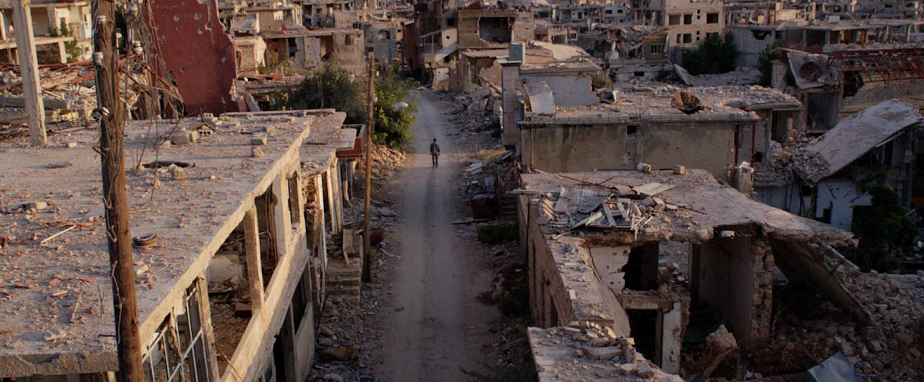 Photo credit: Director of Photography Shadi Shaaban in Syria
Photo credit: Director of Photography Shadi Shaaban in Syria
The victory of the ruin over abstraction
This reading doesn’t require waiting for the film, just as it isn’t a political judgement imposed externally on an artwork. It arises from the film’s production process and the decision to go to Syria to capture scenes of its destruction. Regardless of the narrative or material motives behind this decision, the ‘Syrian image’ imposes itself on the production apparatus as if to confirm that there can be no depiction of violence today without Syria, even if that violence were to predate its destruction. The film begins with the July 2006 war as a stage to address violence and war in general, but then goes on to admit, through this decision, that this stage is no longer sufficient for depicting violence, or that it’s no longer sufficient as a focal point for discussing war. Israeli violence has lost its ‘exemplary’ nature and is no longer the measure of destruction in the region. The director’s image required the Syrian image in order to attain legitimacy as ruin. In that sense, the decision to go to Syria seems to be a recognition that violence after Syria is no longer like the violence that came before. There is a new standard in the region that artistic metaphors are unable to smooth out.
In the unravelling of this metaphor, perhaps there’s the victory of the Syrian image against the possibility of artistic normalization. From a backdrop to another war, this image has turned into a black hole. Even alluding to it exhausts the artwork and renders it, one way or another, about Syria, solely about Syria. In that sense, it’s not Ahmad who ‘went to Syria’, but Syria that invaded his film, and transformed it from one purportedly about the July 2006 war into a work defined solely by the fact that some of its scenes were filmed in Syria. The image was overthrown; the décor became the drama. It’s as if these scenes announce that there’s no depicting violence after Syria, or even before Syria, and that there is no “Divine Victory” that can tame its images. It was the victory of the Syrian ruin over artistic abstraction, even if Syria wasn’t spared the military abstractions of the heroes of the July 2006 war.
On an artistic field that waits and sees
The director rushed to Syria to borrow its images for a metaphor. The artistic field, however, is still waiting for the film to comment. To return to the case as an ‘affair’, the issue for those who raised it wasn’t ‘only’ related to the cinematic decisions taken by a Lebanese director, but rather about an implicit challenge to a cultural and artistic ‘atmosphere’ accused of spinelessness, mendacity, and complicity, or what we might call ‘waiting and seeing’. The description might seem a bit harsh, but there are stark signs that our field of cultural production is severely lacking in critique and accountability, which explains a culture of private reproach over public criticism. From the culture of ‘networks’ to institutional clientelism, through to covering up abuses of power here or sexual harassment there, it seems as if our artistic field is unable to perform self-critique, no matter how critical it is toward others. And if there are critiques of the state of culture, they usually take the form of pompously bemoaning the state of culture in our fallen world…
In light of this cover up, it’s not surprising that ‘scandal’ and ‘shaming’ have become tools for criticism. Any case becomes a pretext for a veiled attack on the entire structure of cover ups, turning the accused into a scapegoat for some greater adversary. Similarly, it’s not surprising that criticism in this climate becomes a ‘betrayal of trust’, making public something that should have remained behind the scenes, and transforming the critic into a scapegoat for vulgarly ‘lowering the standards’ of engagement. In this kind of cultural field, the idea of the field’s ‘autonomy’ is transformed into something closer to ‘sacrosanctity’, with its attendant vocabulary of modesty, betrayal, propriety, and shame. But the issue isn’t about defending the field’s autonomy from moralizing, but rather defending its ‘sacrosanctity’ from political accountability. When confronting the sacrosanct, there’s scandal, not critique.
Herein lies the final abstraction in the All this Victory affair, and that’s the abstraction of the cultural field from its interests, struggles, and borders—abstraction under the rubric of ‘waiting and seeing’. Just as the metaphor-abstraction failed to contain the Syrian ruins, waiting-and-seeing-abstraction failed to contain the affair, shaming the field itself as a structure for shielding modesty and spinelessness. There remains, amidst the ruins of this affair, the question of remembering the ‘Syrian Revolution’, and what it means to normalize the process of destruction as an obstacle to any abstraction, whether artistic or political. And this question won’t go away no matter how long we wait…
This article was translated from Arabic to English by Stefan Tarnowski








